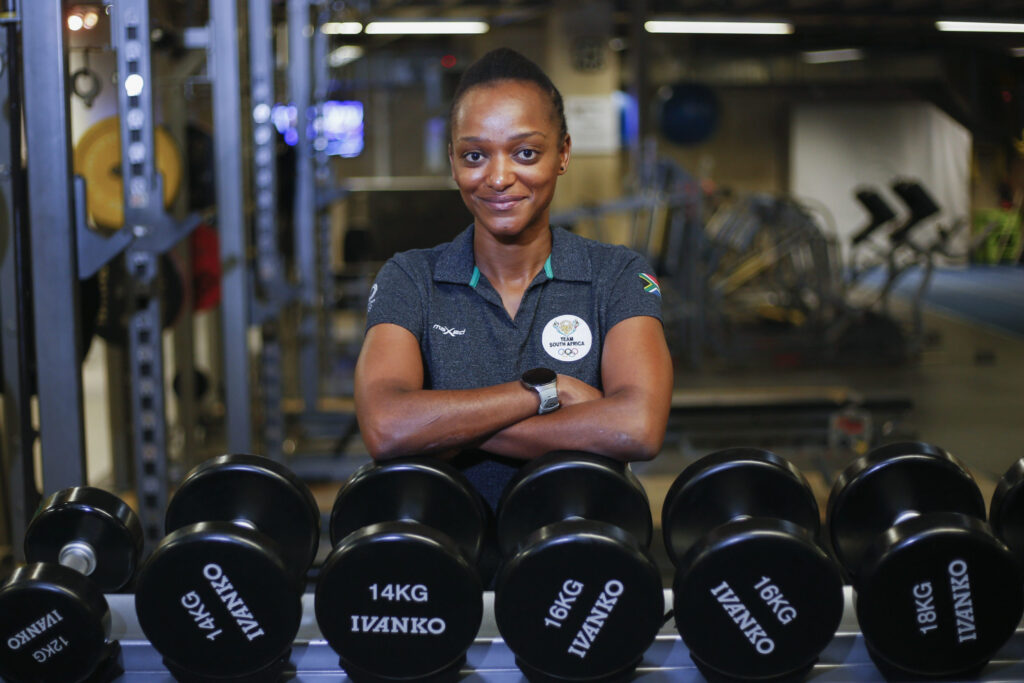We invited Dr Phathokuhle Zondi to share her perspective on Sport and Exercise Medicine (SEM) in her home country, South Africa.

Tell us more about yourself
I am a Sports Medicine Physician with a clinical interest in female athlete health and performance. I knew from the day I started medical school that I wanted to specialise in SEM and all these years later, there’s not a day that I’ve questioned if I’m on the right path. I have made it my life’s work to use sport to create opportunities and unlock potential in those I encounter. I’ve witnessed first-hand how sport can transform lives, uplift families, and unite communities, but I’ve also experienced the inequity in these opportunities, locally and globally. As a result, I spend a significant amount of time involved in projects and advocacy that empower personnel, build infrastructure, and create systems to facilitate equity in sport and transformation through sport.

What is the path to become a sport and exercise physician/physio/scientist in South Africa, and what are the main hurdles on this path?
An exciting recent development was the establishment of SEM as a speciality in South Africa at the end of 2021! Before this, an aspiring SEM clinician would first need to complete an undergraduate degree in their chosen discipline (medicine, physiotherapy, science), and thereafter a sport-specific Masters degree to qualify them as a Sports Physician or Sports Physiotherapist. Only a select number of universities offer this sport-specific Masters and thus a historical challenge was the limited intake at these institutions. A further challenge is completing the course! Training in sports medicine involves part-time study consisting of face-to-face patient interaction, practical field side, assignments, self-study and submission of a thesis, with many students simultaneously juggling full-time clinical practice, family and other responsibilities; hence, successful completion in the stipulated time frame can be a challenge. Finally, most people start this journey with a goal to work for an elite sporting team, however, the reality is that there are only a limited number of positions in this setting and graduates often need to find alternative ways to meaningfully apply their qualification. For example, many find themselves practicing in sub-elite and/or community-level sport. Ultimately, there is still some work to be done in getting other clinical specialities and the general population to understand the role that SEM can play in disease prevention and management.
How developed is collaborative work in SEM in South Africa?
This really depends on the setting in which one works. Great systems of interdisciplinary collaboration exist at sport-focused universities, and in independent high-performance institutes/centres across South Africa. Where we can certainly do better is collaboration between universities/centres. Working together to share best practice, testing protocol and combined capacity building workshops is critical. Practitioners who work in independent private practice generally don’t benefit from interdisciplinary collaboration, although there are exceptions whereby establishing referral networks has led to functional collaborations.
Are exercise physiologists/scientists integrated into your healthcare system, and does health insurance cover for their services?
South Africa has a two-tiered, arguably unequal, healthcare system consisting of public and private services. The state-funded public sector caters for 71% of the population, but is plagued with problems such as poor infrastructure, staff shortages and other resource constraints which impact service delivery. South Africa’s public healthcare system does include physiotherapists as rehabilitation specialists, but rather caters to acute post-operative rehabilitation and/or for chronic orthopaedic and neurological pathologies. Exercise physiologist/scientists that work in public healthcare are often members of academic units conducting research in public hospitals, rather than direct employees of the hospitals.
The private sector is funded through individual contributions to health insurance and caters for approximately 27% of the population. Some health insurers offer capped cover for para-medical services, such as rehabilitation, but few (if any) pay for the financial costs of exercise scientists. Unfortunately, this means exercise physiologists are only accessed by those who can afford to pay out-of-pocket for these services, or by athletes who are associated with universities/clubs who employ sports scientists as part of their multidisciplinary teams.
What is done in South Africa to promote SEM among students and young professionals regarding research and clinical opportunities?
Established in 1977, the South African Sports Medicine Association (SASMA) has played a significant role in promoting the benefits of sport science and sport medicine to the South African community. Activities include regional and national multidisciplinary meetings for health professionals; educational programs for members, coaches, athletes and the general public; publication of a scientific journal; and, the development of informed position and public statements in a wide range of sports medicine topics.
In some universities, SEM is now being presented to undergraduate students in the form of lecture series or blocks. This has resulted in an increased awareness amongst students about the SEM discipline, its clinical application and its role in health promotion and physical activity participation. It also means that students are now aware it exists as a career pathway once they graduate from medical school.
In terms of “field-of-play” opportunities, the increasing professionalism of sport in South Africa means that more teams are including sports science and medical personnel as members of their multidisciplinary management team on a contract or full-time basis; thus, the number of opportunities within the field continues to increase.
Lastly, given that non-communicable diseases pose a rising burden on public health and the healthcare system in South Africa, there has been an increased focus on preventative interventions and therefore more funding has become available to SEM clinicians and researchers working in this space.
Finally, if you were Harry Potter, what would you change to SEM in South Africa?
Easy – I would make SEM accessible to more communities in South Africa. Right now, our value is mostly limited to well-funded sports teams or government-funded sports development programmes. Most of our top sporting talent is bred on dusty rural streets and playgrounds, yet little capacity building takes place at this level. I believe we’re only scraping the surface of talent identification and development, and not nearly realising our full sporting potential as a country.
When it comes to healthcare in general, again, SEM clinicians service a small percentage of individuals using private healthcare. If we were to employ clinicians in the public system and shifted the overall emphasis of the healthcare system towards preventative interventions, we could play a significant role in reducing disease burden and improving the quality of life of South Africans.